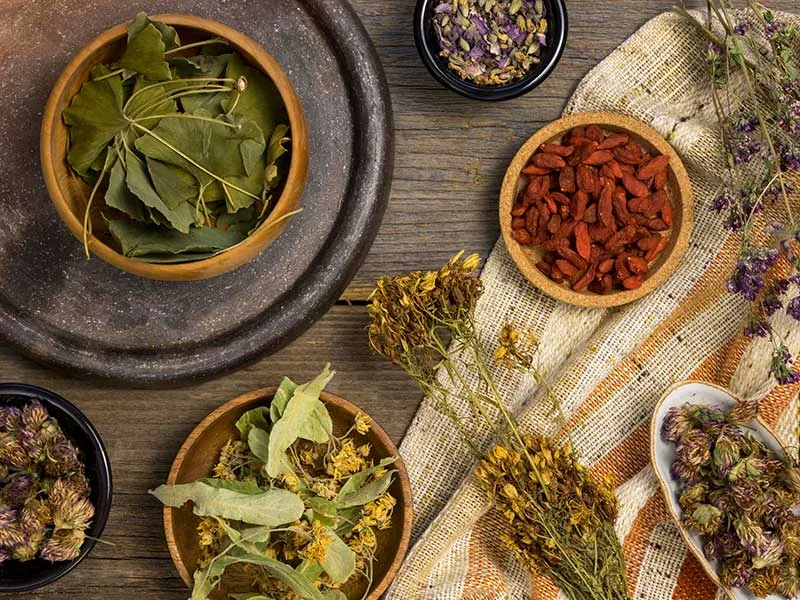7 Exotic Herbal Teas from Around The World You Should Try
We all know that herbal teas are part of different cultures and traditions around the world. Most of us are familiar with common teas like chamomile, peppermint, or green tea, but the world of teas does not end here. Let’s talk about exotic teas not many people know about. In every corner of the world, there are plants that local people have been using for centuries to make special herbal teas. These teas have different, often unique flavors. Some of them may seem a little strange, but it makes drinking them a totally new and amazing experience.
In this article, we’ll explore 9 rare, exotic herbal teas from faraway lands. We will discuss their origin, health benefits, and brewing method.
7 Exotic Herbal Teas from Around The World

Here we are talking about 9 rare and strange herbal teas which are as follows.
#1 Tubho Tea
In the Batanes Islands of the Philippines, locals brew a special tea from a fern called Tubho. Tubho tea is a traditional herbal drink of the region, often sweetened with brown sugar. People believe that Tubho increases longevity and is very useful for strengthening the body. In the past, most of the elderly on the island used to drink this tea.
How to Brew Tubho Tea/Decoction?
- Boil dried Tubho leaves in water similar to brewing decoctions.
- Wait for the water to turn dark.
- Strain it and add brown sugar or other sweeteners, and drink.
#2 Tsheringma Tea
Bhutan, a small country in the Himalayas, is full of special and mysterious traditions. One of their interesting herbal teas is Tsheringma tea, which is made from the local saffron flower and the bark of a tree called Shing-tsha. Locals in this region drink this drink for health, longevity, and increased energy.
How to Brew Tsheringma Tea?
- Pour the flowers and bark into hot water.
- Let them steep for 3 to 7 minutes.
- Strain and drink plain.
You can also add honey if you prefer a sweeter taste.
#3 Omija-Cha Tea
Omija-cha in Korean means five-flavor fruit, and the tea tastes similar to the exotic fruit from the region called Schizandra fruit. It has a combination of sour, sweet, salty, bitter, and spicy flavors. Koreans make this tea from its dried fruit. The brewed Omija-cha tea is both colorful and full of health benefits, such as improving blood circulation, reducing inflammation, and strengthening the kidneys.
How to Brew Omija-Cha Tea?
- Place dried Omija fruit in boiling or cold water.
- Let it sit for a few hours to color.
- Strain and consume with honey or sugar.
#4 Boldo Tea
Boldo is a native plant from Chile that is used in traditional medicine for digestive problems. Local people in this region believe that boldo tea detoxifies the liver and soothes the stomach. The taste of this tea is slightly bitter, but it is more palatable with honey or lemon.
Brewing method:
- Pour one teaspoon of boldo leaves into hot water.
- Allow them to steep for 5 to 10 minutes.
- Strain and drink.
#5 Kava Tea
Kava is a plant from the pepper family that grows on islands, such as Fiji and Tonga, near the Pacific Ocean. Locals in those areas use the kava plant roots brew a traditional drink. Kava is a type of herb with sedative properties that helps reduce anxiety and improve sleep.
How to Brew Kava Tea?
- Soak dried or powdered kava root in lukewarm water.
- Gently squeeze it to extract the liquid in a clean cup.
- Strain and drink.
#6 Karkade Tea
Karkade, or red tea, is made from dried hibiscus flowers. This drink is very common in Sudan and Egypt, but is less well known in other parts of the world. Its bright red color and sour taste make it an interesting herbal tea, especially for cold brewing. Karkade has several health benefits. It is rich in antioxidants and may lower blood pressure and control hypertension.
How to Brew Karkade Tea?
- Pour up to 2 teaspoons of dried flowers into boiling water.
- Wait for 5 to 10 minutes.
- Strain and drink hot or cold depending on your preference.
#7 Chanca Piedra Tea
Chanka piedra is a plant found in abundance in the Amazon rainforest. Chanca piedra means stone breaker because it is very useful for treating kidney stones and effective for liver health and improving digestion.
How to Brew Chanca Piedra Tea?
- Put a teaspoon of dried leaves in hot water.
- Let it steep for about 15 minutes.
- Strain and drink.
Conclusion
Herbal teas are not just drinks, but a bridge to the cultures and traditions of people around the world. From the Philippines and Bhutan to Chile and the Amazon, each of these teas has a story behind it; a story of life, nature and local beliefs. When you drink one of these teas, you are actually experiencing a part of the history and culture of that land. In addition, many of them have special health properties that may be useful in your daily life.
Of course, you should always keep in mind that some of these herbs may not be suitable for everyone and it is better to consult a doctor or herbalist before regular consumption. Trying these drinks can be a small journey into the unknown, a journey that is summarized in a small cup.
